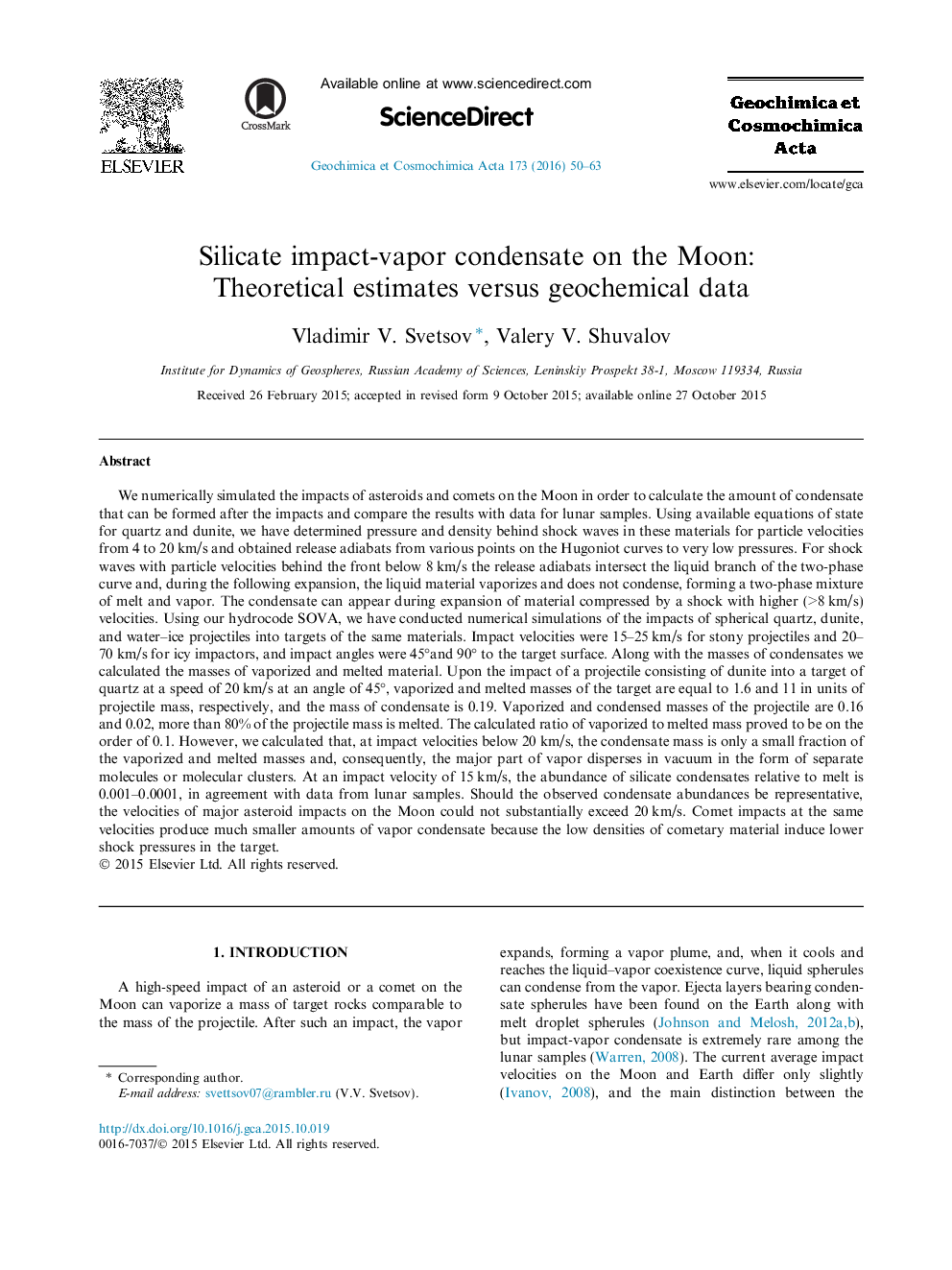| کد مقاله | کد نشریه | سال انتشار | مقاله انگلیسی | نسخه تمام متن |
|---|---|---|---|---|
| 6437551 | 1637984 | 2016 | 14 صفحه PDF | دانلود رایگان |
We numerically simulated the impacts of asteroids and comets on the Moon in order to calculate the amount of condensate that can be formed after the impacts and compare the results with data for lunar samples. Using available equations of state for quartz and dunite, we have determined pressure and density behind shock waves in these materials for particle velocities from 4 to 20 km/s and obtained release adiabats from various points on the Hugoniot curves to very low pressures. For shock waves with particle velocities behind the front below 8 km/s the release adiabats intersect the liquid branch of the two-phase curve and, during the following expansion, the liquid material vaporizes and does not condense, forming a two-phase mixture of melt and vapor. The condensate can appear during expansion of material compressed by a shock with higher (>8 km/s) velocities. Using our hydrocode SOVA, we have conducted numerical simulations of the impacts of spherical quartz, dunite, and water-ice projectiles into targets of the same materials. Impact velocities were 15-25 km/s for stony projectiles and 20-70 km/s for icy impactors, and impact angles were 45°and 90° to the target surface. Along with the masses of condensates we calculated the masses of vaporized and melted material. Upon the impact of a projectile consisting of dunite into a target of quartz at a speed of 20 km/s at an angle of 45°, vaporized and melted masses of the target are equal to 1.6 and 11 in units of projectile mass, respectively, and the mass of condensate is 0.19. Vaporized and condensed masses of the projectile are 0.16 and 0.02, more than 80% of the projectile mass is melted. The calculated ratio of vaporized to melted mass proved to be on the order of 0.1. However, we calculated that, at impact velocities below 20 km/s, the condensate mass is only a small fraction of the vaporized and melted masses and, consequently, the major part of vapor disperses in vacuum in the form of separate molecules or molecular clusters. At an impact velocity of 15 km/s, the abundance of silicate condensates relative to melt is 0.001-0.0001, in agreement with data from lunar samples. Should the observed condensate abundances be representative, the velocities of major asteroid impacts on the Moon could not substantially exceed 20 km/s. Comet impacts at the same velocities produce much smaller amounts of vapor condensate because the low densities of cometary material induce lower shock pressures in the target.
Journal: Geochimica et Cosmochimica Acta - Volume 173, 15 January 2016, Pages 50-63
